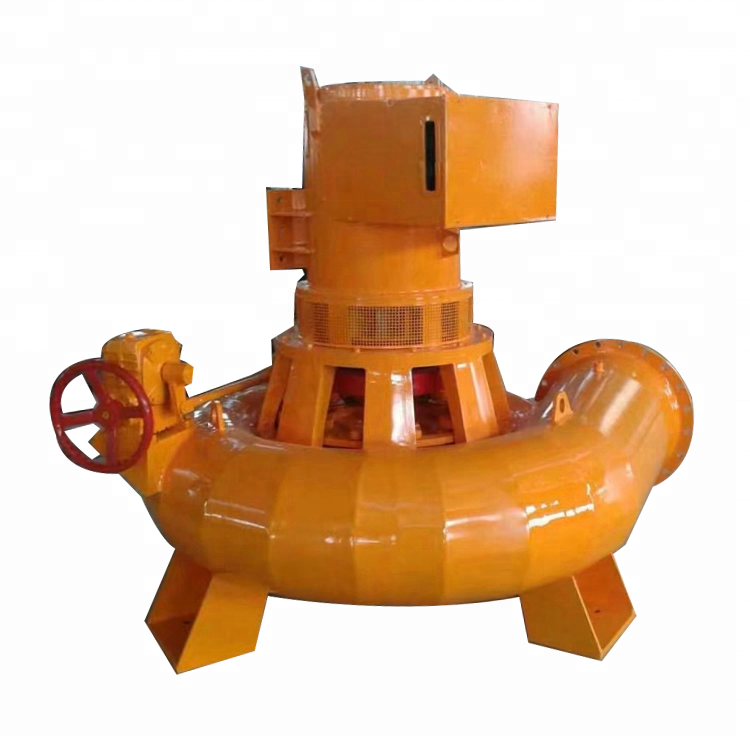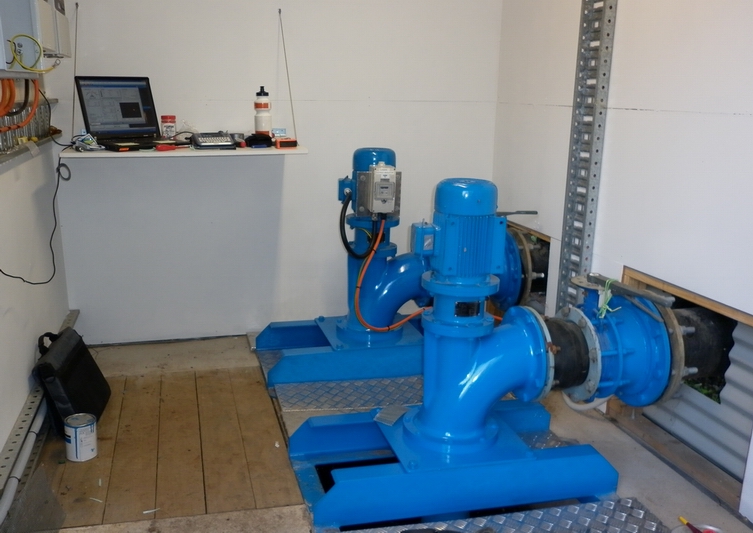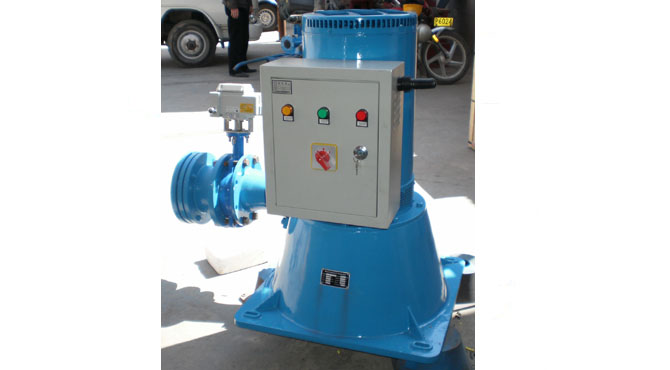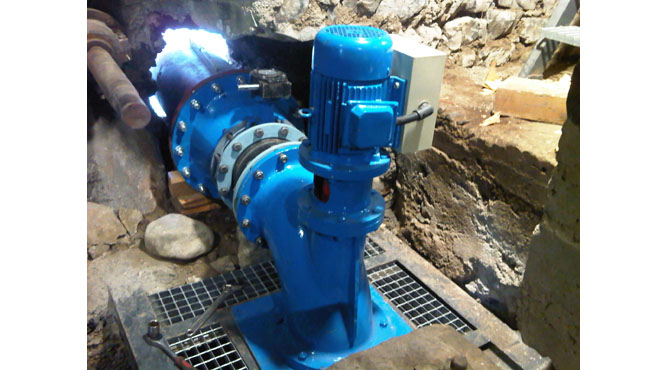In the pursuit of sustainable and renewable energy sources, hydroelectric power generation has taken center stage.
Hydro turbines play a vital role in this equation, converting the kinetic energy of flowing water into electricity.
If you’re contemplating the installation of a 3 kW hydro turbine, it’s essential to have a comprehensive understanding of the costs involved.

In this extensive buying guide, we will delve into the various aspects that influence the pricing of 3 kW hydro turbines, helping you make an informed decision for your energy needs.
Contents
- 1 Table of Contents
- 2 1. Introduction
- 3 2. Factors Influencing the Cost of 3 kW Hydro Turbines
- 4 3. Types of 3 kW Hydro Turbines
- 5 4. Cost Breakdown of a 3 kW Hydro Turbine
- 6 5. Choosing the Right Turbine for Your Needs
- 7 6. Finding Reliable Hydro Turbine Manufacturers and Suppliers
- 8 7. Installation and Maintenance
- 9 8. Case Studies
- 10 9. Frequently Asked Questions
- 11 10. Conclusion
Table of Contents
- Introduction
- Understanding Hydroelectric Power
- The Need for Renewable Energy
- What Is a 3 kW Hydro Turbine?
- Factors Influencing the Cost of 3 kW Hydro Turbines
- Turbine Type
- Head and Flow
- Manufacturing Material
- Installation and Maintenance
- Location and Permitting
- Types of 3 kW Hydro Turbines
- Kaplan Turbines
- Francis Turbines
- Pelton Turbines
- Crossflow Turbines
- Cost Breakdown of a 3 kW Hydro Turbine
- Turbine Unit
- Installation
- Maintenance and Repairs
- Ancillary Equipment
- Choosing the Right Turbine for Your Needs
- Assessing Your Hydro Resource
- Environmental Impact
- Budget Considerations
- Finding Reliable Hydro Turbine Manufacturers and Suppliers
- Researching Manufacturers
- Requesting Quotes
- Evaluating Product Quality
- Installation and Maintenance
- Site Assessment
- Legal and Permitting Requirements
- Maintenance Best Practices
- Case Studies
- Real-World Examples of 3 kW Hydro Turbine Installations
- Frequently Asked Questions
- Addressing Common Queries About 3 kW Hydro Turbines
- Conclusion
- Recap of Key Considerations
- Making an Informed Decision
1. Introduction
Understanding Hydroelectric Power
Hydroelectric power, a clean and renewable energy source, harnesses the energy of flowing water to generate electricity. It’s an environmentally friendly option that reduces greenhouse gas emissions, making it a crucial player in mitigating climate change. Hydro turbines are at the heart of hydroelectric power generation, responsible for converting water’s kinetic energy into electrical power.
The Need for Renewable Energy
As concerns about climate change and energy sustainability continue to rise, the need for renewable energy sources has become increasingly apparent. Fossil fuels, which have powered our world for centuries, are finite and contribute significantly to environmental degradation. The search for alternatives has led us to explore cleaner energy solutions, with hydroelectric power ranking high on the list.
What Is a 3 kW Hydro Turbine?
A 3 kW hydro turbine is a piece of equipment designed to generate 3 kilowatts of electricity from the energy of flowing water.
It’s a mid-sized hydro turbine that’s suitable for various applications, including powering remote homes, agricultural operations, and small businesses.

The choice of a 3 kW turbine depends on your energy needs, water resources, and budget.
In this comprehensive buying guide, we will explore the factors influencing the cost of 3 kW hydro turbines, the different turbine types available, a detailed cost breakdown, tips for choosing the right turbine, finding reliable manufacturers, installation and maintenance considerations, case studies of real-world installations, and answers to frequently asked questions.
2. Factors Influencing the Cost of 3 kW Hydro Turbines
Several critical factors influence the cost of a 3 kW hydro turbine. Understanding these variables is essential for making an informed purchasing decision. Let’s explore each of these factors in detail:
Turbine Type
The type of turbine you choose significantly impacts the cost. Different turbine designs are suitable for various water conditions, so your site’s characteristics will determine the most suitable type. Common turbine types include Kaplan, Francis, Pelton, and Crossflow turbines.
- Kaplan Turbines: Ideal for low head, high flow sites.
- Francis Turbines: Suited for medium head and flow conditions.
- Pelton Turbines: Designed for high head, low flow sites.
- Crossflow Turbines: Versatile and suitable for a range of head and flow conditions.
The cost varies because each turbine type requires different manufacturing processes and materials.
Head and Flow
The head (vertical drop) and flow (volume of water) of your site are critical determinants of the turbine type and cost. High head sites with strong water flow require different turbines than low head sites with steady but less powerful flow. The turbine must match the site’s characteristics for optimal performance, and this matching process can influence the cost.
Manufacturing Material
The materials used in the construction of the turbine impact its durability and, subsequently, its cost. High-quality materials, such as stainless steel or advanced composites, enhance the turbine’s longevity but also come at a higher price. Choosing the right materials should be a balance between upfront costs and long-term durability.
Installation and Maintenance
The cost of installation and ongoing maintenance should not be overlooked. Proper installation ensures the turbine operates at its full potential. Maintenance and repair costs depend on factors like the turbine type, materials, and the site’s environmental conditions. Some turbines require more frequent maintenance than others.
Location and Permitting
The location of your hydro turbine project and the associated permitting process can significantly affect costs. Different regions have varying regulations and environmental requirements that must be adhered to, potentially increasing costs in terms of legal and regulatory compliance.

3. Types of 3 kW Hydro Turbines
The selection of the right turbine type is crucial for optimal performance and cost-effectiveness. Here’s an overview of the most common types of 3 kW hydro turbines:
Kaplan Turbines
Kaplan turbines are known for their efficiency and adaptability. They are ideal for low head and high flow conditions, making them a suitable choice for sites with significant water volume but limited vertical drop. Kaplan turbines feature adjustable blades that allow for fine-tuning their performance according to the site’s specific conditions.
Francis Turbines
Francis turbines are versatile and widely used in medium head and flow conditions. They consist of fixed runner blades and adjustable guide vanes, allowing for efficient operation across a range of water conditions. Francis turbines are known for their durability and reliability.
Pelton Turbines
Pelton turbines are specifically designed for high head and low flow sites. They are recognized by their distinctive appearance, featuring a series of spoon-shaped buckets where water jets impact. This design efficiently harnesses the energy of fast-moving water, making Pelton turbines an excellent choice for mountainous regions and steep waterfalls.
Crossflow Turbines
Crossflow turbines are renowned for their simplicity and adaptability. They are suitable for a wide range of head and flow conditions, making them a versatile choice for various hydroelectric projects. Crossflow turbines are known for their low maintenance requirements and long service life.
Selecting the most appropriate turbine type for your specific site conditions is crucial for maximizing energy generation and minimizing costs.
4. Cost Breakdown of a 3 kW Hydro Turbine
To understand the overall cost of a 3 kW hydro turbine, it’s essential to break down the expenses into several components:
Turbine Unit
The cost of the turbine unit itself is a significant portion of the total expenditure. This includes the manufacturing, materials, and components that make up the turbine. Prices can vary depending on the turbine type and manufacturer.
Installation
Installation costs involve the labor, equipment, and materials required to set up the turbine at your chosen site. Site preparation, foundations, and electrical connections are essential parts of the installation process. Specific costs may also include civil engineering work, excavation, and any necessary infrastructure.
Maintenance and Repairs
Ongoing maintenance and potential repair costs should be accounted for in your budget. Proper maintenance is crucial for the longevity and efficiency of your hydro turbine. Costs may include routine inspections, cleaning, lubrication, and replacing worn or damaged parts. These expenses can vary depending on the turbine type and the site’s environmental conditions.
Ancillary Equipment
Ancillary equipment, such as the generator, controls, and electrical infrastructure, contributes to the overall cost of the hydroelectric system. High-quality components are essential for efficient energy conversion and reliable operation. The cost of these additional components should be included in your budget calculations.

Understanding the breakdown of costs allows you to make informed decisions and ensures there are no surprises as you progress through the project.
5. Choosing the Right Turbine for Your Needs
Selecting the appropriate 3 kW hydro turbine for your needs involves a comprehensive assessment of several critical factors:
Assessing Your Hydro Resource
An initial step in choosing the right turbine is conducting a thorough assessment of your hydro resource. This includes evaluating the head and flow characteristics of your site, which play a crucial role in determining the suitable turbine type. A well-matched turbine will generate more electricity and maximize your return on investment.
Environmental Impact
Environmental considerations are paramount when selecting a hydro turbine. Your project should adhere to all local, regional, and national environmental regulations. Minimizing the environmental impact of your installation is not only responsible but can also lead to regulatory incentives.
Budget Considerations
Your budget constraints will inevitably play a role in your turbine selection. While it’s essential to invest in a quality system for long-term reliability, it’s also crucial to balance the upfront cost with your financial capabilities.
Considering all these factors will help you make an informed decision when choosing the right 3 kW hydro turbine for your specific needs.
6. Finding Reliable Hydro Turbine Manufacturers and Suppliers
One of the most critical aspects of purchasing a 3 kW hydro turbine is finding a reputable manufacturer or supplier. Here’s a step-by-step guide to assist you in this process:
Researching Manufacturers
Extensive research is essential in identifying reputable hydro turbine manufacturers. Look for manufacturers with a proven track record, positive customer reviews, and a history of delivering high-quality products. Online directories, industry publications, and trade shows are valuable resources for finding potential manufacturers.
Requesting Quotes
Once you’ve identified potential manufacturers, contact them to request detailed quotes for your project. Quotes should include all relevant costs, including the turbine unit, installation, maintenance, and ancillary equipment. Make sure to provide accurate information about your site and project requirements to receive precise quotes.
Evaluating Product Quality
Product quality is of utmost importance, as it directly impacts the efficiency and longevity of your hydro turbine system. Review the technical specifications of the turbine units offered by manufacturers. Consider factors like material quality, design efficiency, and performance under varying conditions.
Additionally, inquire about the manufacturer’s warranty and after-sales support. A comprehensive warranty and a responsive support team are crucial for addressing potential issues and ensuring the long-term performance of your hydro turbine.
7. Installation and Maintenance
Proper installation and ongoing maintenance are critical for the successful operation of your 3 kW hydro turbine. The following steps are essential to consider:
Site Assessment
Before installation, conduct a detailed site assessment to ensure that your chosen location is suitable for a hydro turbine. Factors to consider include the head and flow characteristics, environmental impact, and regulatory requirements. Site assessments may require professional expertise and engineering input.
Legal and Permitting Requirements
Every hydro turbine installation must adhere to local, regional, and national regulations. The permitting process may involve obtaining environmental impact assessments, water rights, and other necessary legal documents. Compliance with these requirements is essential to prevent legal complications and ensure the sustainability of your project.
Maintenance Best Practices
Regular maintenance is crucial for the efficient and long-lasting performance of your hydro turbine. Develop a maintenance schedule that includes routine inspections, cleaning, and lubrication. Specific maintenance requirements can vary depending on the turbine type and the site’s environmental conditions. Additionally, ensure that you have a reliable maintenance team or plan in place to address any issues promptly.
8. Case Studies
To gain a deeper understanding of the real-world application and benefits of 3 kW hydro turbines, let’s explore some case studies of successful installations. These examples will provide insights into various project types, locations, and challenges:
Case Study 1: Remote Off-Grid Community
In a remote off-grid community nestled in the mountains, a 3 kW Pelton turbine was installed to provide electricity to local homes. The high head and low flow conditions were ideal for this turbine type. The installation significantly improved the quality of life for residents by providing a consistent and sustainable power source.
Case Study 2: Agricultural Operation
An agricultural operation in a rural area installed a 3 kW Francis turbine to power irrigation systems and farm equipment. The medium head and flow conditions made the Francis turbine an excellent choice. The project reduced operating costs and environmental impact while increasing farm productivity.
Case Study 3: Eco-Friendly Resort
An eco-friendly resort in a scenic location integrated a 3 kW Crossflow turbine into its energy generation system. The turbine’s versatility allowed it to adapt to varying head and flow conditions. The resort’s commitment to sustainability and renewable energy attracted environmentally conscious guests and reduced its carbon footprint.
These case studies showcase the diverse applications and advantages of 3 kW hydro turbines across different settings.
9. Frequently Asked Questions
- What is the typical lifespan of a 3 kW hydro turbine? The lifespan of a 3 kW hydro turbine can range from 20 to 50 years or more, depending on factors like turbine type, material quality, maintenance, and operating conditions.
- Are there government incentives for hydro turbine installations? Government incentives and rebates for hydro turbine installations vary by location. Check with local authorities and environmental agencies for information on available incentives.
- What is the expected maintenance frequency for a 3 kW hydro turbine? Maintenance frequency can vary, but it’s typically recommended to perform routine inspections and maintenance every 1 to 3 years, with more frequent checks in harsh environments.
- Can I connect my hydro turbine system to the grid? Yes, it’s possible to connect your hydro turbine system to the grid and potentially sell excess electricity back to your utility provider. However, this often involves grid interconnection agreements and permits.
- What kind of training is required to operate and maintain a hydro turbine system? Proper training is crucial for the safe and efficient operation of a hydro turbine system. Training programs and certifications specific to hydroelectric power generation are available and recommended.
10. Conclusion
In conclusion, the decision to invest in a 3 kW hydro turbine involves careful consideration of various factors, including turbine type, site conditions, budget, and environmental impact. It’s essential to conduct a comprehensive assessment of your hydro resource and engage with reliable manufacturers and suppliers to ensure a successful installation.
Proper site assessment, legal compliance, and regular maintenance are key elements for the efficient and long-lasting operation of your hydro turbine system. By understanding the intricacies of the 3 kW hydro turbine market, you can make an informed decision that aligns with your energy needs, sustainability goals, and budget constraints.
The transition to renewable energy sources, such as hydroelectric power, plays a vital role in mitigating climate change and securing a sustainable energy future. A well-informed approach to purchasing and installing a 3 kW hydro turbine is a significant step toward achieving this goal.


